Related Research Articles
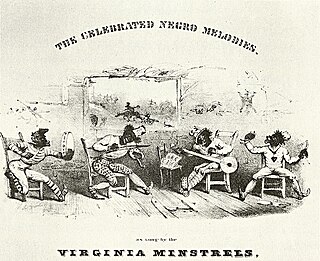
The minstrel show, also called minstrelsy, was an American form of racist entertainment developed in the early 19th century. Each show consisted of comic skits, variety acts, dancing, and music performances that depicted people specifically of African descent. The shows were performed by mostly white people in make-up or blackface for the purpose of playing the role of black people. There were also some African-American performers and black-only minstrel groups that formed and toured. Minstrel shows lampooned black people as dim-witted, lazy, buffoonish, superstitious, and happy-go-lucky.

Christopher Haverly (1837–1901), better known as J. H. Haverly or John H. "Jack" Haverly, was an American theatre manager and promoter of blackface minstrel shows. During the 1870s and 1880s, he created an entertainment empire centered on his minstrel troupes, particularly Haverly's United Mastodon Minstrels and Haverly's Colored Minstrels. Under his guidance, these troupes grew to impressive sizes and featured elaborate sets and costumes. They toured widely, enlarging minstrelsy's audience to encompass the entire United States as well as England. Haverly's methods sparked a revolution in minstrelsy as other troupes scrambled to compete. As the costs of minstrelsy increased, many troupes went out of business.
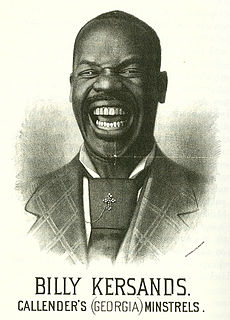
Billy Kersands was an African-American comedian and dancer. He was the most popular black comedian of his day, best known for his work in blackface minstrelsy. In addition to his skillful acrobatics, dancing, singing, and instrument playing, Kersands was renowned for his comic routines involving his large mouth, which he could contort comically or fill with objects such as billiard balls or saucers. His stage persona was that of the dim-witted black man of the type that had been popularized in white minstrel shows. Modern commentators such as Mel Watkins cite him as one of the earliest black entertainers to have faced the dilemma of striking a balance between social satire and the reinforcement of negative stereotypes.
Charles Callender was the owner of blackface minstrel troupes that featured African American performers. Although a tavern owner by trade, he entered show business in 1872 when he purchased Sam Hague's Slave Troupe of Georgia Minstrels.
Sam Hague was a British blackface minstrel dancer and troupe owner. He was a pioneering white owner of a minstrel troupe composed of black members, and the success he saw with this troupe inspired many other white minstrel managers to tour with black companies.

Gustave Frohman was a theatre producer and advance man. He was one of three Frohman brothers who entered show business and he worked for most of his career alongside his brother, Charles Frohman. These two financed a number of theatre productions, often featuring African American actors. For instance, in 1878, they starred Sam Lucas in the first serious stage production of Uncle Tom's Cabin with a black man in the lead role.
Charles Barney Hicks was an American advance man, manager, performer, and owner of blackface minstrel troupes composed of African-American performers. Hicks himself was a minstrel performer who could sing and play challenging roles such as the minstrel-show interlocutor or endmen. However, he was most interested in the business side of minstrelsy. Over the course of his career, he worked with most successful black minstrel troupes as manager, owner or both. The white-dominated minstrel market proved hostile to a black owner, and Hicks had to travel abroad or manage for white owners in order to make a reliable living. Nevertheless, both white and black rivals came to respect him. One observer in 1891 wrote, "This man Hicks was a dangerous man to all outside managers and they all were afraid of him." In 1912, Hicks was the sole African American listed on M. B. Leavitt's list of "best known advance agents during the last fifty years".
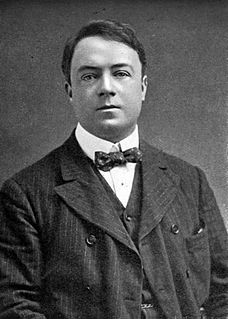
Charles Courtice Pounds, better known by the stage name Courtice Pounds, was an English singer and actor known for his performances in the tenor roles of the Savoy Operas with the D'Oyly Carte Opera Company and his later roles in Shakespeare plays and Edwardian musical comedies.

Walter Alfred Slaughter was an English conductor and composer of musical comedy, comic opera and children's shows. He was engaged in the West End as a composer and musical director from 1883 to 1904.
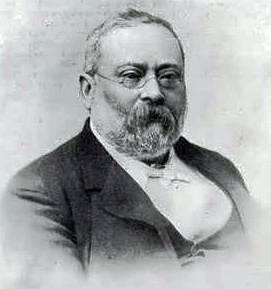
Wilhelm Meyer Lutz was a German-born British composer and conductor who is best known for light music, musical theatre and burlesques of well-known works.

The Casino Theatre was a Broadway theatre located at 1404 Broadway and West 39th Street in New York City. Built in 1882, it was a leading presenter of mostly musicals and operettas until it closed in 1930.

Edward Jakobowski was an English composer, especially of musical theatre, best known for writing the hit comic opera Erminie.
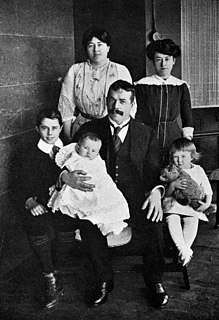
Sir Benjamin John Fuller was an English-born Australian theatrical entrepreneur.

Irving Sayles was an African-American vaudeville entertainer. He spent much of his life in Australia as a popular minstrel show performer, touring the Tivoli circuit. He performed coon songs and employed a self-deprecating humor involving comic interpretations of plantation slavery that reinforced negative racial stereotypes.

Alma Stuart Stanley was a British actress and vocalist once popular on both sides of the Atlantic Ocean. She was perhaps best remembered as Lady Teazle in Sheridan's The School for Scandal and Aphrodite in George Procter Hawtrey's Atlanta. In a career of more than thirty years she appeared in some sixty plays and made two North American tours. Her later years were spent in reduced circumstances, culminating with her death at a London prison hospital following an arrest for public intoxication.
Tom McIntosh (1840–1904) was an African-American comedian who starred in many colored minstrel shows in the US from the 1870s to the 1900s. He was considered one of the funniest performers in this genre.

Joseph Valentin Duc was a French operatic tenor.

Rudolph Lewis was a bass-baritone known for creating several small roles in the Gilbert and Sullivan operas including Go-To in The Mikado (1885) and Old Adam Goodheart in Ruddigore (1887).

Joseph William Herbert was a British-born American director, silent-film actor, singer and dramatist notable for being the first person to play Ko-Ko in America in a pirate production of Gilbert and Sullivan's The Mikado (1885) before joining D'Oyly Carte Opera Company touring companies across America (1885-1890).
References
- Toll, Robert C. (1974). Blacking Up: The Minstrel Show in Nineteenth-century America. New York: Oxford University Press.